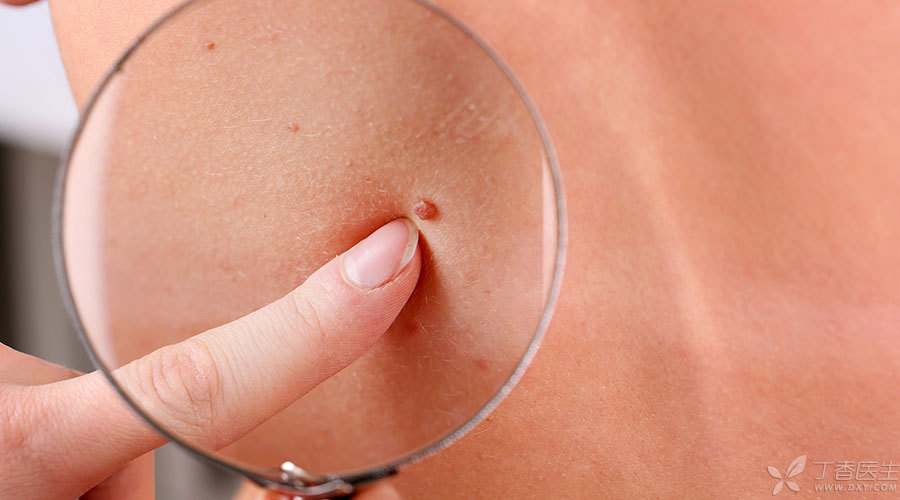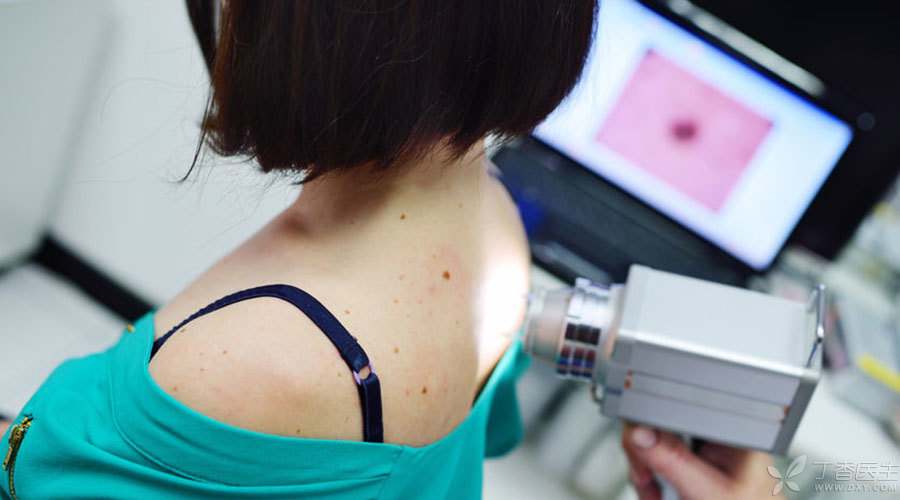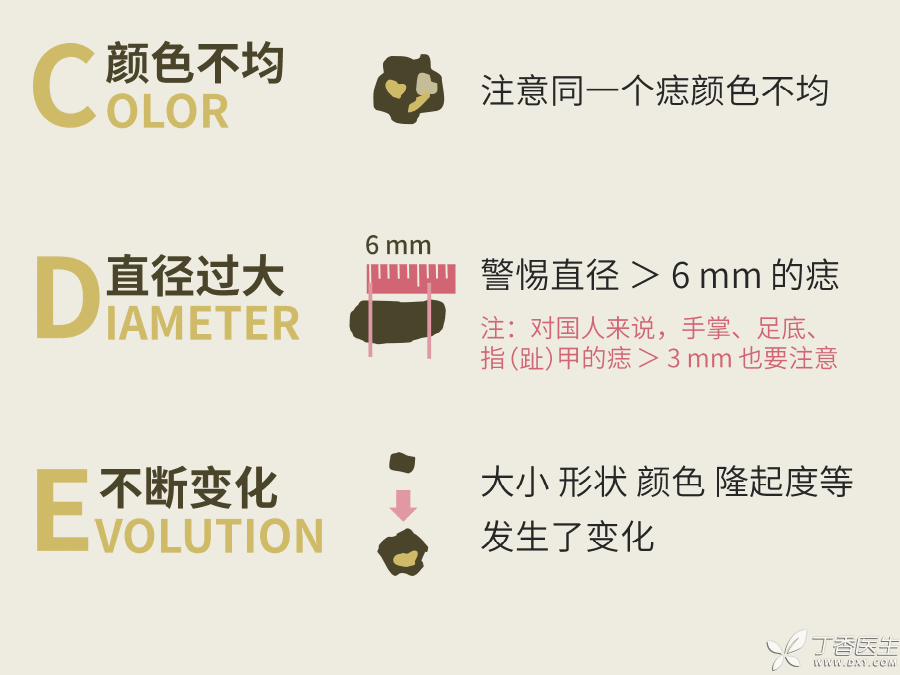
There are three things in the world that everyone is equal: insomnia, alopecia and mole.
Today let’s talk about moles.
There is a mole on my face, and every time I see it, I feel a little
The mole on the body, some of which are well-behaved and the size remains unchanged, while others are unconsciously [getting fat].
Mole grew up, not only not good-looking, but also worried about canceration. Want to remove, and don’t know what method is good, do it will relapse?
To solve these problems, we should start with why there are moles.
Why is there a mole
The common term “nevus” refers to pigmented nevus, an abnormal manifestation of skin development.
In general, melanocytes are evenly distributed in the skin. When the number of melanocytes increases and they form a mass (nevus cell mass), moles are formed.
Moles are common at all ages, but puberty is the most likely to grow, just like acne.
However, moles are much more stubborn than acne, and their greatest harm is canceration.
Nevus cells have strong regeneration and replication ability. If stimulated, causing gene mutation, they may develop into malignant melanoma.
This kind of melanoma is easy to metastasize and deteriorates rapidly. It is usually found to be in the advanced stage, leaving few opportunities for early treatment. What’s more, the therapeutic effect of malignant melanoma is not ideal and the mortality rate is high.
The factors that stimulate nevus canceration are around us.

There are 3 accomplices to canceration,
1. Ultraviolet rays
This is the most common factor inducing malignant transformation. Ultraviolet rays can penetrate the skin surface, stimulate nevus cells to cause gene mutation, and increase the risk of canceration.
Melanocytes in the skin can resist ultraviolet rays and reduce the damage of ultraviolet rays to nevus cells, so people with white skin color are more likely to become cancerous.
2. Trauma and friction
Frequent stimulation of moles is more likely to cause canceration, so parts that are easy to rub, such as soles of feet, palms, [belt areas], etc., are the areas where melanoma occurs most frequently.
3. Heredity
Patients with family history are more likely to develop malignant melanoma.
Such moles should be on guard.
Don’t worry, most moles will not deteriorate, and the probability of canceration is 2-3 people/100,000 people. If you are really not sure, you’d better ask a doctor. In addition, you can also check yourself from the following two aspects:
1. Where did it grow?
Generally, the sole, palm and belt repeatedly squeeze the pigmented nevus in the friction area. In any case, it is recommended to remove it surgically as soon as possible.
2. Form and color.
The following five kinds of nevus are recommended to be removed and biopsied as soon as possible.


Which is the strongest method for removing nevus
If you search casually, you will find all kinds of mole removal methods, such as laser mole removal, beauty salon mole removal, surgical mole removal… The right method is equivalent to half the success.
Before removing moles, remember these 8 words first: either do not remove moles or remove moles completely.
Removing nevus itself is also a kind of stimulation, incomplete recurrence may occur, and multiple recurrences will increase the risk of canceration. However, once and for all removal, there will be no worries about these.
1. Small nevus and small removal
Smaller and shallower moles can be removed by physical methods such as freezing, laser or microwave, which is simple, safe, thorough and cheap.
Step 2: Cut off the large nevus
Larger and deeper borderline nevus or intradermal nevus are recommended for surgical resection. Safe, thorough, less recurrence, less risk of malignant transformation, generally no obvious scar left, suitable for all pigmented nevus.
The operation is also very simple. After local anesthesia, it will be completed in a short time.
However, for patients with scar constitution, mole removal is not recommended. No matter surgery or other physical methods, there is a risk of stimulating hyperplastic scars or even keloids.
3. Do not choose nevus removal among the people.
Chemical corrosion method is commonly used in beauty salons and barbershops to remove moles, which may not be completely removed and is easy to leave scars and relapse.
The bigger problem of folk mole removal is irregularity.
It is impossible to judge the type and depth of nevus. If the deeper nevus is not removed clean at one time, it is easy to relapse and leave hidden dangers of canceration. If you want to remove nevus, you should choose a regular hospital and ask a doctor to check it.
